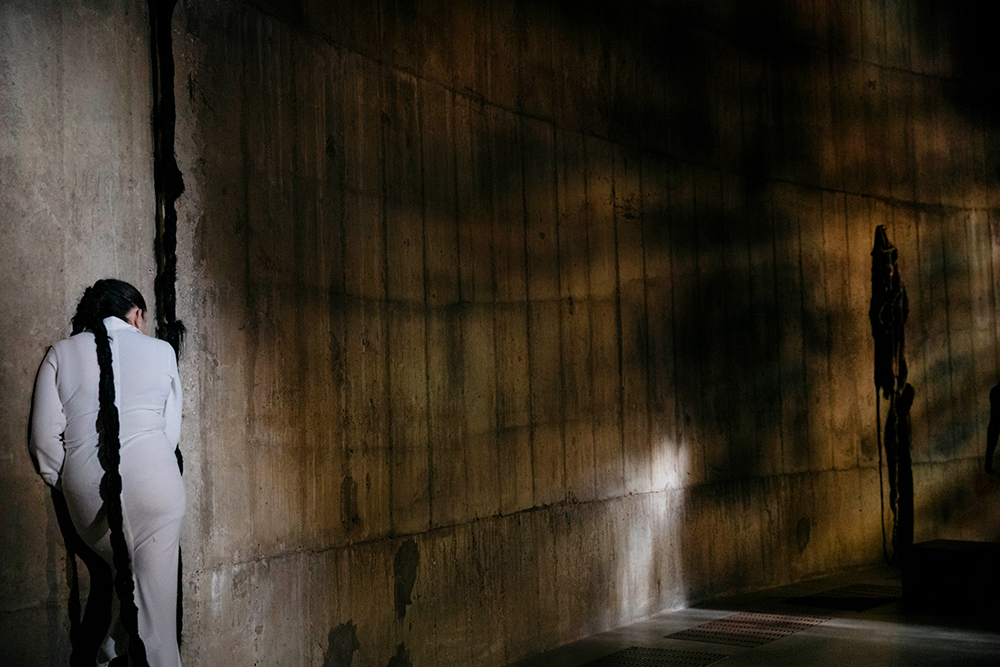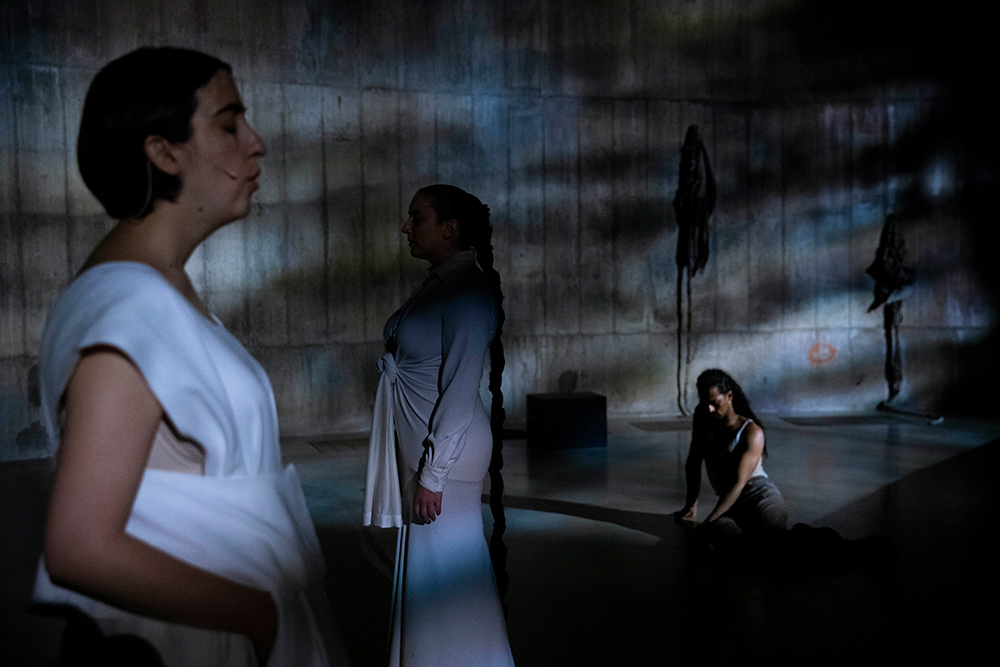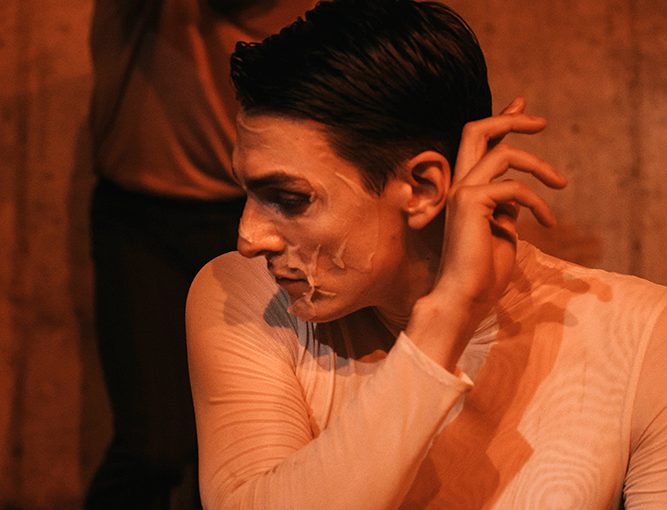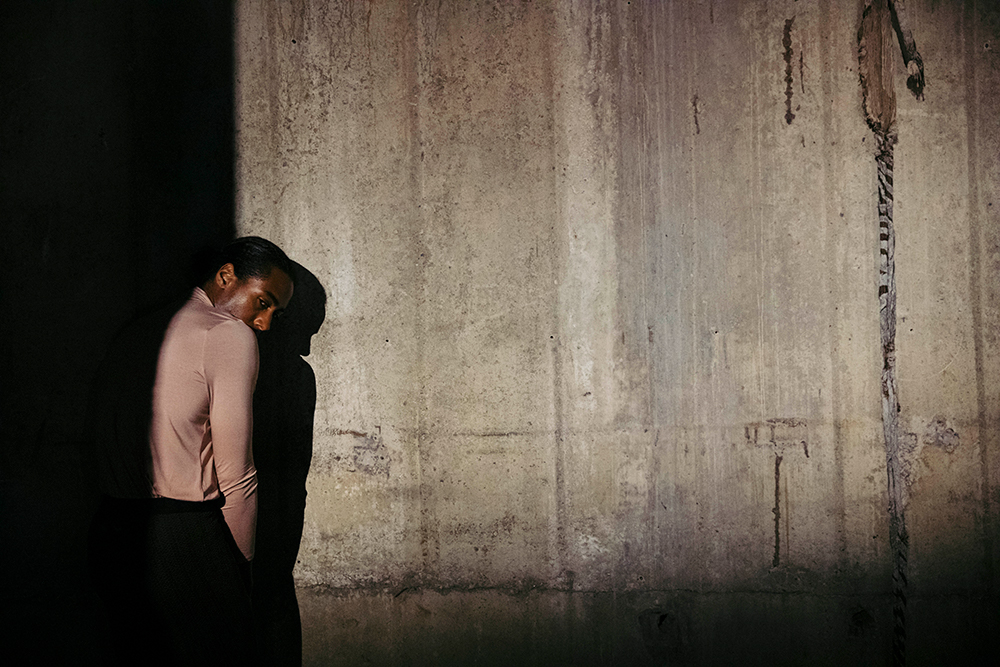Queueing in the Tate Modern’s bunker-like Blavatnik Building, pre-show conversation is hushed into silence after filing into the dimly lit, cylindrical Tanks gallery. For Pan Daijing’s contemporary art opera Tissues, running on October 2, 4 and 5, classically-trained vocalists wander the space doing vocal utterances that sound like odd whale calls. Plain garments and a long lock of hair hang on the raw concrete walls. There’s enough symbolic eeriness and sonic tension here—with aesthetic allusions to horror—to suggest a dynamic and uncertain performance might follow.

Tissues is a large scale commission for the Berlin-based artist, having previously released visceral noise records on PAN and Bedouin Records, as well as fetish-inflected live performances. A major performance last year at the Barbican Centre built upon Daijing’s momentum and potential in big institutional shows. At the Tate Modern Daijing premieres an “opera in five acts” with a group of singers and movement performers surrounding the audience. Presented in the Tate Film programme (while notably devoid of moving image), the show happens over three nights concurrent with Frieze London and the opening week of Kara Walker’s haunting monument to British empire and the transatlantic slave trade in her Turbine Hall commission Fons Americanus. Daijing’s Tissues sits within an institutional framework enthusiastic about ‘encounters’ and ‘experiences’, or in the Tate’s words, a programme that “prompts the audience to consider their perceptions of sound, image, space and duration”.
What follows is a slow-moving performance installation of sorts. The eeriness as we enter the cold and cavernous space cedes to an anticipation of a brooding climax that never quite arrives, as the singers in simple monochrome outfits move gradually around the audience delivering operatic vocalisations. There are occasional washes of blood red light, a brief moment of livelier dancing in the dark, subtle sonic shifts and electronics. However, the pace between the acts is highly drawn out.

In the programme notes, Daijing comments, “Tissues has no definite point. It’s like you fall into a void, you’re just floating. The work becomes an ambience.” Sound studies academic Seth Kim-Cohen has written on a certain understanding of ‘ambience’ that has recently become aligned with an interest in sound by contemporary art institutions. Sound, Kim-Cohen posits, despite a linguistic and symbolic richness that is equal to visual media, never quite got its conceptual turn as the visual arts did with the 20th century avant-garde. The medium of sound was too often read in phenomenological terms as being experiential, beyond language. For Kim-Cohen in his 2016 book Against Ambience—pointing to major shows such as MoMA’s 2013 Soundings: A Contemporary Score—this new interest among institutions in sound art is not coming from a desire to give sound as a medium its critical due. Rather, it seems that its association with unexamined ‘experiences’ fits well with a new museological appetite for precisely that. It’s no coincidence either that artists working with light like James Turrell and Olafur Eliasson, (the subject of a major exhibition in the same building as Daijing’s performance), whose works are also read in the framework of ‘ambience’, enjoy institutional ubiquity.
This particular mode of ambience is not a neat mode of framing for Daijing’s work. In 2018 at the Barbican Centre, language, textuality and narrative was at the centre of the performance. First addressing the audience, unseen in darkness, Daijing told the theatre candidly that she had a cold and that when she would emerge, she would be drinking tea as her voice was important for the performance. As a spotlight found her on the steps of the stalls, she asked a crowd member to hold her drink as she moved down the aisle and began, hauntingly, to sing a lullaby her mother had sung her as a child. Walking slowly onto the stage into what became a deeply psychological sonic unpacking of memory and interior life, Daijing’s unaccompanied voice gave way to epic electronic washes and wombs of noise. In this performance, the artist masterfully used shifting moods and atmosphere to build a gripping narrative arc.

With Tissues, Daijing’s grip on the narrative potential of atmosphere (as opposed to the narrative absence of ambience) is evident upon arrival into the Tanks. It’s not ‘pure’ sound or light that’s populating the environment. The grim and stark lighting cast against the dungeon-esque walls of the former industrial space, the draping white garments of performers, the gothic anachronism of the operatic vocal sounds echoing across the walls, even the piece’s ambiguous and visceral title. These are all rich sonic, visual and linguistic signifiers, waiting to become animated over the course of the opera’s acts. However, the long and slow duration of the piece, the willingness to turn the menacing raw materials of the work into ‘void’ and ‘ambience’, can’t help but give a sense of lost potential. When at one point of the performance a spotlight beams down scanning individual audience members, there is a slight return to tension, a feeling of an impending confrontation. It is one however that never materialises. While the ambient works that are the subject of Kim-Cohen’s criticism expect very little of their audiences—merely drift in, ‘encounter’ the work then drift out—the situation of feeling locked in the Tanks for Tissues adds an interesting durational discomfort. There is a sense of being trapped in a consciously lengthy performance that—while a narrative arc is desired—does at least mess with the institutional understanding of ambience as fodder to contribute to Instagram feeds, particularly since photography and filming is prohibited.

Eventually, in a moment that feels provocatively abrupt, the doors to the Tanks swing open with a heart-stopping clunk filling the performance space with light. The singers continue in their vocalisations and slow movements while the atmosphere of the entrance hall pours in. People sit for a few moments more—what to do, clap? Leave? It feels at last satisfyingly like a conscious mind-fuck played on the audience as captives in a void, before coming to and herding out the exit—back to our phones and the ambience of selfies being taken in the Turbine Hall.**
Pan Daijing’s Tissues was on at London’s Tate Modern on Oct 2, 4 and 5, alongside performance installation The Absent Hour, running October 2 to 6, 2019.













